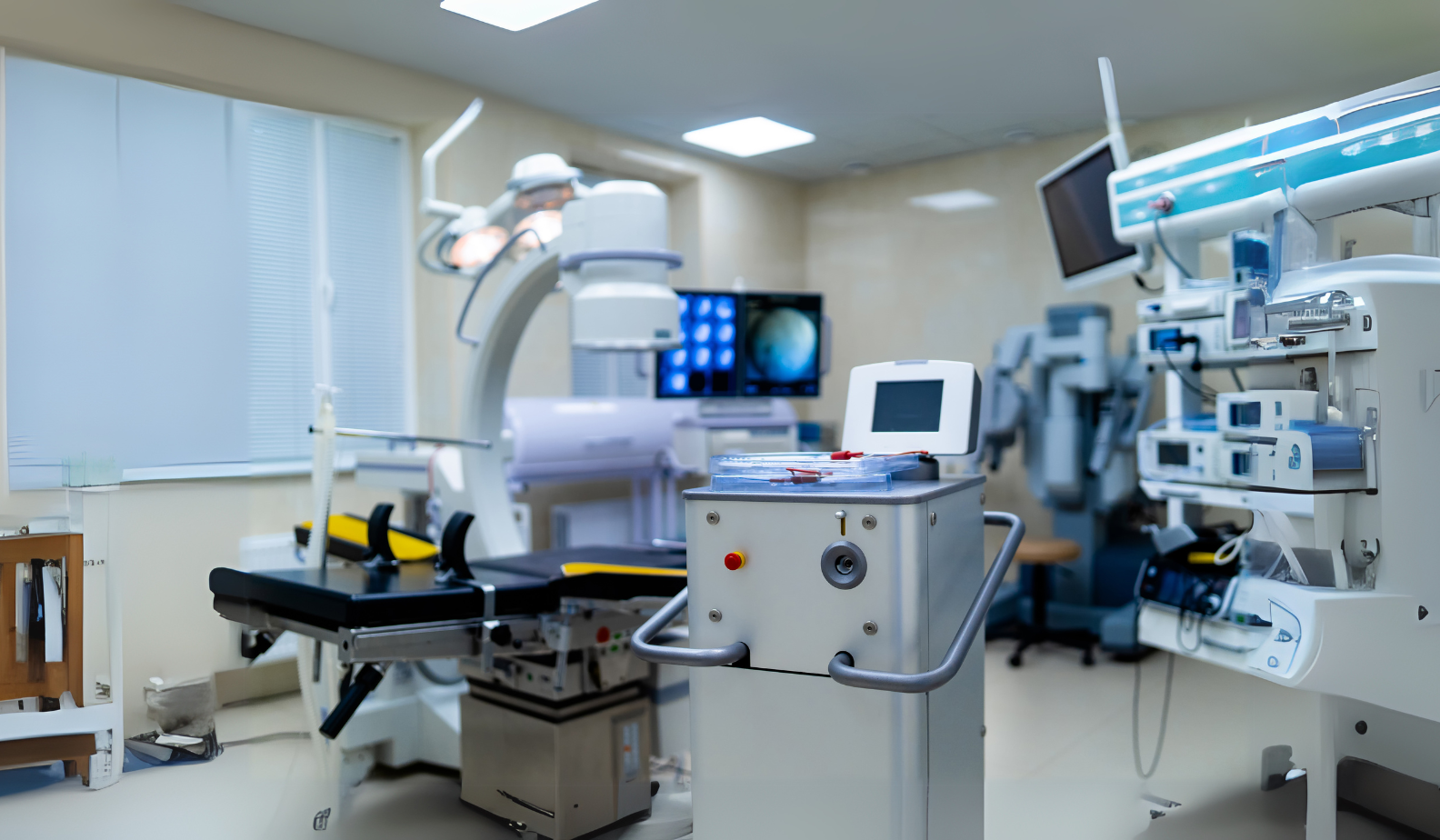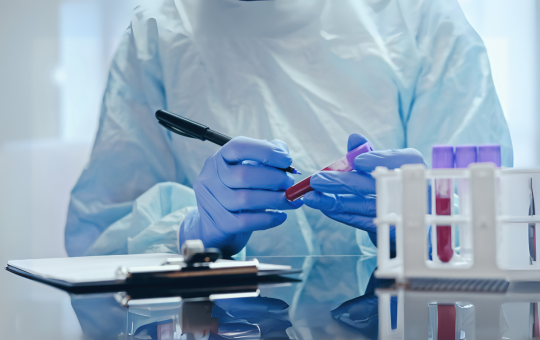
ISO 13485: Medical Devices Quality Management System Lead Auditor
- Quality assurance professionals in the medical device industry.
- Internal auditors aiming to enhance their auditing skills.
- Consultants specializing in medical device regulations.
- Regulatory and compliance managers.
- Professionals responsible for supplier quality assessments.
- Gain a thorough understanding of ISO 13485 requirements.
- Develop the skills to plan, conduct, and lead audits effectively.
- Understand the role of risk management in medical device quality systems.
- Learn techniques for identifying non-conformities and ensuring corrective actions.
- Acquire knowledge of global regulatory frameworks, including FDA and EU MDR.
- Global Certification: Achieve recognition as an ISO 13485 Lead Auditor.
- Enhanced Career Prospects: Expand opportunities in quality management and regulatory compliance.
- Practical Audit Skills: Perform efficient and thorough audits to ensure compliance.
- Regulatory Expertise: Address the challenges of medical device regulations worldwide.
- Drive Improvements: Help organizations enhance product safety and customer satisfaction.
- Introduction to ISO 13485
- Scope and importance of ISO 13485 in the medical device industry.
- Key differences between ISO 13485 and ISO 9001.
- ISO 13485 Requirements
- Detailed examination of each clause of the standard.
- Emphasis on regulatory requirements and risk-based thinking.
- Audit Fundamentals
- Principles of auditing as per ISO 19011 guidelines.
- Auditor responsibilities and ethical considerations.
- Audit Planning and Preparation
- Developing an audit plan, checklists, and documentation.
- Determining audit scope, criteria, and objectives.
- Conducting the Audit
- Gathering evidence through interviews, observations, and document reviews.
- Evaluating compliance and identifying areas for improvement.
- Non-Conformities and Reporting
- Writing clear and actionable audit reports.
- Prioritizing non-conformities and recommending corrective actions.
- Risk Management in ISO 13485
- Integration of risk-based approaches in quality management systems.
- Addressing product risks and regulatory compliance.
- Practical Exercises and Case Studies
- Role-playing audit scenarios and real-world examples.
- Hands-on experience in audit techniques and decision-making.
- Global Regulatory Requirements
- Understanding international frameworks like FDA, EU MDR, and other regional regulations.
- Aligning ISO 13485 systems with regulatory expectations.
- Post-Audit Activities
- Follow-up processes to ensure continuous improvement.
- Preparing for surveillance and re-certification audits.
- Expert Trainers: Learn from industry specialists with extensive experience in ISO 13485.
- Interactive Sessions: Engage in group discussions, case studies, and role-play exercises.
- Comprehensive Content: Cover all aspects of ISO 13485 and related regulations.
- Flexible Learning Options: Choose between in-person, virtual, or blended training formats.
Module 1: Introduction to ISO 13485 and Medical Device QMS
Overview of ISO 13485 and its relevance to the medical device industry.
Relationship between ISO 13485 and ISO 9001.
Understanding terminology, structure, and regulatory context.
Scope of application across manufacturers, suppliers, and service providers.
Module 2: ISO 13485 Requirements and Clauses
Detailed breakdown of each clause of the standard.
Emphasis on risk-based decision-making, product realization, and process validation.
Key focus areas:
Design and development controls
Purchasing and supplier management
Process monitoring and measurement
Control of non-conforming products
Alignment with FDA QSR and EU MDR requirements.
Module 3: Regulatory Frameworks and Compliance
Overview of global medical device regulations (FDA, MDR, ISO 14971, ISO 15223-1, ISO 14155).
Understanding technical documentation, UDI, and post-market surveillance.
Managing audits under multiple regulatory authorities.
Module 4: Audit Fundamentals and Principles
Overview of ISO 19011 auditing principles.
Audit ethics, independence, and professional conduct.
Types of audits: internal, supplier, and certification audits.
Role of the Lead Auditor and maintaining objectivity.
Module 5: Audit Planning and Preparation
Establishing audit objectives, scope, and criteria.
Reviewing documentation: Quality Manual, SOPs, CAPA records, validation files.
Developing audit checklists tailored to medical device processes.
Coordinating audit resources and scheduling.
Module 6: Conducting the Audit
Conducting opening meetings and briefing audit teams.
Performing on-site audits of design, manufacturing, and servicing areas.
Interviewing personnel and evaluating competence.
Observing product realization, calibration, and validation activities.
Identifying evidence of conformity and non-conformity.
Module 7: Non-Conformities and Corrective Actions
Categorizing audit findings: major, minor, and opportunities for improvement.
Root cause analysis (5 Whys, Fishbone Diagram).
Developing corrective and preventive action plans (CAPA).
Evaluating the effectiveness of implemented improvements.
Module 8: Audit Reporting and Communication
Writing clear, concise, and objective audit reports.
Presenting findings to management and stakeholders.
Handling sensitive or regulatory findings professionally.
Conducting closing meetings and documenting conclusions.
Module 9: Post-Audit Activities and Re-Certification
Follow-up procedures and verification audits.
Surveillance and re-certification audits.
Document control, record-keeping, and retention.
Supporting continuous improvement and maintaining readiness for regulatory inspections.
Module 10: Practical Workshops and Case Studies
Role-playing audits across design and production facilities.
Real-world case studies:
Device design failure
Supplier quality issue
CAPA system deficiency
Group exercises on risk-based auditing and compliance verification.
This course is specifically designed for professionals involved in the medical devices industry who are responsible for ensuring quality, regulatory compliance, and product safety. It is ideal for:
Quality Assurance and Quality Control Managers:
Responsible for maintaining and improving quality management systems within medical device organizations.Internal and External Auditors:
Seeking to qualify as Lead Auditors and conduct ISO 13485 compliance, supplier, or certification audits.Regulatory and Compliance Managers:
Ensuring that products and processes meet international medical device regulations such as FDA 21 CFR 820, EU MDR, and IVDR.Medical Device Manufacturers and Suppliers:
Professionals overseeing design, production, installation, or servicing of medical devices who wish to align operations with ISO 13485 standards.Consultants and Quality Professionals:
Advising or assisting organizations in implementing, maintaining, or improving ISO 13485-certified quality management systems.Design and Production Engineers:
Involved in device design, validation, and process control within medical device manufacturing.Risk and CAPA Specialists:
Focusing on preventive and corrective action systems to enhance compliance and product safety.Professionals Aspiring to Career Growth:
Individuals aiming to advance into leadership or auditing roles within the medical device, healthcare, or life sciences sectors.
Our assessment process is designed to ensure every learner achieves the required level of knowledge, skills, and understanding outlined in each course unit.
Purpose of Assessment
Assessment helps measure how well a learner has met the learning outcomes. It ensures consistency, quality, and fairness across all learners.
What Learners Need to Do
Learners must provide clear evidence that shows they have met all the learning outcomes and assessment criteria for each unit. This evidence can take different forms depending on the course and type of learning.
Types of Acceptable Evidence
Assignments, reports, or projects
Worksheets or written tasks
Portfolios of practical work
Answers to oral or written questions
Test or exam papers
Understanding the Structure
Learning outcomes explain what learners should know, understand, or be able to do.
Assessment criteria set the standard learners must meet to achieve each learning outcome.
Assessment Guidelines
All assessment must be authentic, current, and relevant to the unit.
Evidence must match each assessment criterion clearly.
Plagiarism or copied work is not accepted.
All learners must complete assessments within the given timelines.
Where applicable, assessments may be reviewed or verified by internal or external quality assurers.
Full learning outcomes and assessment criteria for each qualification are available from page 8 of the course handbook.
Top Courses
No results found.
Related Courses
Let's Get in touch
Deleting Course Review
Course Access
This course is password protected. To access it please enter your password below:

